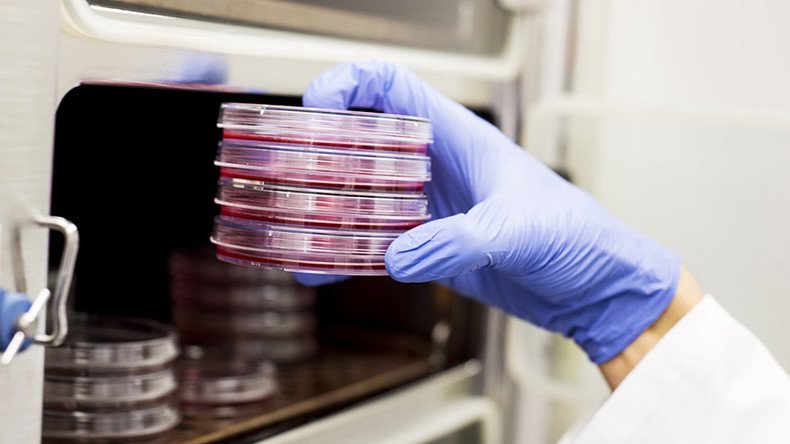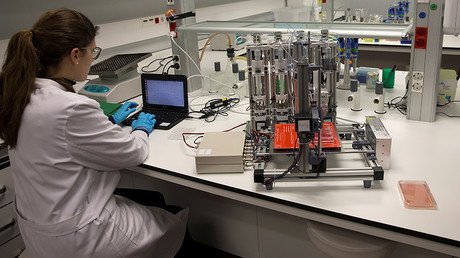‘Killer’ nanomachines can destroy cancer cells within one minute – research

Cancer may be cured by “killer” nanomachines that break into tumor cells within 60 seconds, according to ground-breaking research.
Scientists from Durham University found that when subjected to light, the tiny molecules can spin so quickly they can perforate cell lining.
In one test, the man-made nanomachines – tiny engines made up of gold particles that spring apart after being subjected to light – took between one and three minutes to break into a prostate cancer cell, killing it instantly.
“We are moving towards realising our ambition to be able to use light-activated nanomachines to target cancer cells such as those in breast tumours and skin melanomas, including those that are resistant to existing chemotherapy,” Dr. Robert Pal of Durham University said.
“Once developed, this approach could provide a potential step change in non-invasive cancer treatment and greatly improve survival rates and patient welfare globally,” Dr. Pal said, according to the Telegraph.
The molecules must be triggered by ultraviolet light or they will merely attach to the surface of the cell without attacking it.
Besides being used as a weapon to destroy tumor membranes, the nanomachines can also be used to carry therapeutic agents to cells.
“These nanomachines are so small that we could park 50,000 of them across the diameter of a human hair, yet they have the targeting and actuating components combined in that diminutive package to make molecular machines a reality for treating disease,” Dr. James Tour, a member of the international team from Rice University in Houston, said.
Dr. Tour then admitted that whilst he was initially sceptical about the technology’s remit in medicine, he has now reconsidered its application.
“For many years I never had envisioned the nanomachines being used medically, I thought they were way too small, because they are much, much smaller than a cell, but now this work has really changed my thoughts on this and I think therapeutically this will be a whole new way to treat patients, it’s going to be an excellent application for cancer treatment, not just for killing of cells but for the treatment of cells, interacting with the human body using molecular machines.”
Trials are currently being carried out on microorganisms and small fish, and scientists hope they will soon be able to try the technology on rodents too. If animal testing proves successful, clinical trials on humans will then get the go-ahead.














